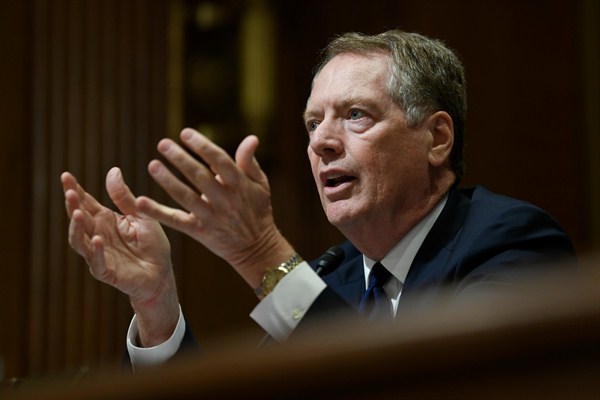One of President Donald Trump’s top trade priorities upon entering office was renegotiating the North American Free Trade Agreement. Renegotiations eventually went through, despite some typical threats and taunts from Trump along the way about tearing up or withdrawing from the existing deal. Along with Canadian Prime Minister Justin Trudeau and former Mexican President Enrique Pena Nieto, Trump signed the revised pact, now dubbed the U.S.-Mexico-Canada Agreement, or USMCA, more than seven months ago. Mexico’s Congress ratified the deal in June—by an overwhelming vote of 114-4—while Canada has taken steps to do so before its parliamentary elections this fall.
But can Trump and U.S. Trade Representative Robert Lighthizer convince enough Democrats in Congress to vote for it—without losing even more Republican support—to get the new agreement over the line in Washington? So far, Lighthizer has promised to work with congressional Democrats to satisfy their concerns over enforcement, labor standards and pharmaceuticals, but he has offered glaringly few specifics. Trump, of course, could blow things up at any moment by reviving his threats to impose tariffs against Mexico, or tariffs on foreign cars, or maybe tariffs on something else.
The administration’s stated goal—for the U.S. to formally ratify the USMCA this summer, before Congress’ August recess, and before the presidential campaign enters full swing—is still theoretically possible, but the number of legislative days left is shrinking fast. In late May, the administration submitted to Congress a draft statement of administrative action required to implement the agreement. Thirty days have passed since then, so the White House can now submit implementing legislation to Congress any time it chooses.

